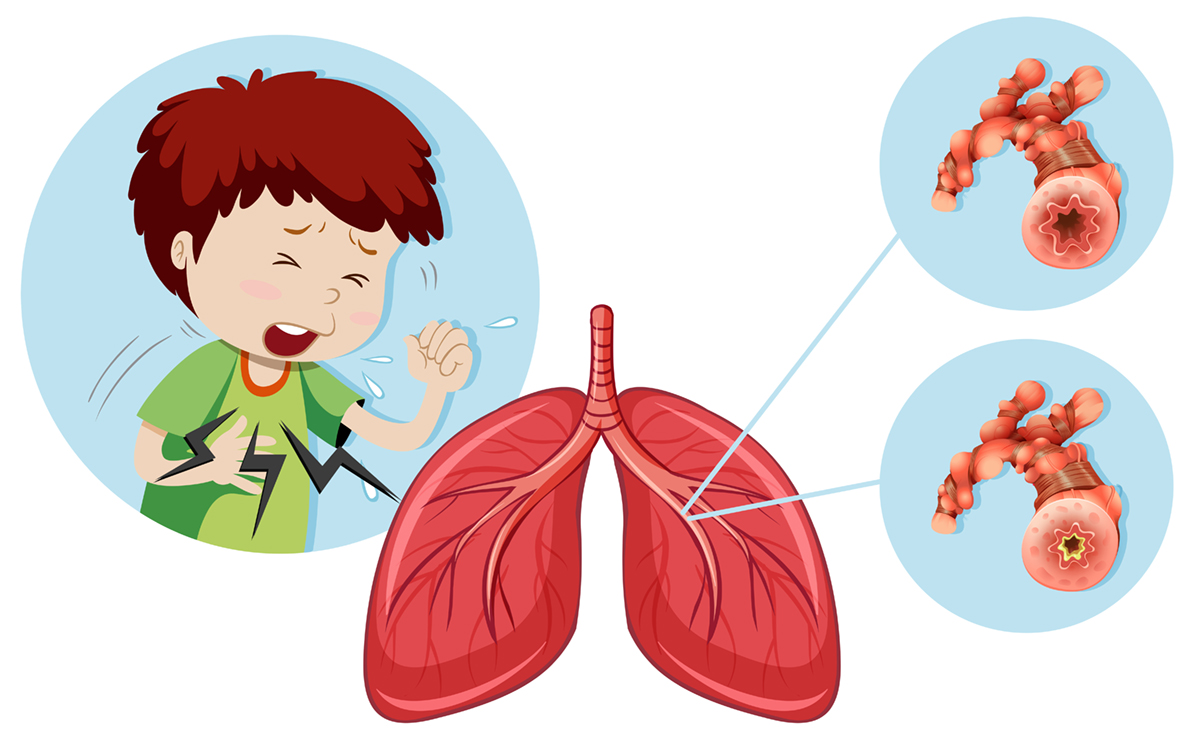Table of Contents
Asthma Sufferers
There is now a compelling body of evidence showing that instruction in fairly simple breathing exercises provided by a trained therapist can improve patients’ experience of their disease and reduce their reliance on rescue medication (Thomas & Bruton, 2014).
Physical therapists may also provide the following services (Swan, 2015):
- An asthma management plan
- Exercise training
- Self-management
- Sputum clearing techniques
- Educating the patient on how to monitor symptoms and how to correctly inhale medications
- Inspiratory Muscle Training
- The Buteyoko breathing technique
- Relaxation techniques
- Biofeedback
- Exercise programs for those with exercise-induced asthma

Odd are that you know someone who suffers from asthma. My brother is someone I know who suffered its wrath mostly in his youth. If my family had only known about the many ways that a physical therapist could have helped him back then, I’m sure my parents would have sought out a specially trained PT to teach him one or more of these techniques.
It could have helped him breathe better and lowered the cost of medications if he could have learned to cope without an inhaler.
Vertigo – Benign Paroxysmal Positional Vertigo
Can one session with a physical therapist cure you?
Vertigo brings on short or long bouts of dizziness and spinning when your head is in particular positions. This is actually a balance problem. There are ways to prevent or stop Benign Paroxysmal Positional Vertigo, or BPPV, with treatment from a PT.
According to WebMD (2014), using one of the two methods for treatment, the Seamont or Epley maneuvers, your vertigo can be stopped with one 10 to 15 minute session. That is truly amazing!
Alzheimer’s Disease
Do you have a loved one who is in the early stages of Alzheimer’s disease?
READ 6 Alternative Treatments for Alzheimer's Disease
If so, seek out a physical therapist. They can assist your loved one in many ways including:
- Improved balance
- Pain management
- Muscle strengthening
- Improved mobility
- Fall prevention (through help with muscular weakness)
- Other functional tasks
We always want what’s best for our loved ones, and physical therapists are trained to do so much more than treat injuries. They also help prevent them. The best part is that almost all of their work is non-invasive and leads to an overall better quality of life.
Conclusion
Physical therapists are highly-skilled, highly-educated doctors. They go through rigorous schooling to understand the many facets of the body and how everything in the body is connected and works in unison. PTs are also required to complete continuing education every year. So, they are always abreast of innovative ways to improve the lives of their patients, past, present, and future.
If physical therapy is recommended for you at any time for healing, make sure you schedule your appointments, listen to your PT, and work through their carefully designed therapy for recovery. You will be glad you did.
- Field, T., Diego, M., & Hernandez-Reif, M. (2010, April 1). Preterm Infant Massage Therapy Research: A Review. Retrieved December 03, 2016, from https://www.ncbi.nlm.nih.gov/pmc/articles/PMC2844909/
- Semont and Epley Maneuvers to Treat Vertigo. (2014, November 14). Retrieved December 03, 2016, from http://www.webmd.com/brain/liberatory-maneuvers-for-vertigo
- Swan, J., MSN, BSN, ADN, RN, & Katz, M. J., MD, PhD. (2015). Asthma. Retrieved December 03, 2016, from http://www.therapyceu.com/courses/493/index_pt.html
- Thomas, M., & Bruton, A. (2014). Breathing exercises for asthma. Retrieved December 03, 2016, from http://breathe.ersjournals.com/content/10/4/312
- Vickers, A., Ohlsson, A., Lacy, J. B., & Horsley, A. (2004). Massage for promoting growth and development of preterm and/or low birth-weight infants. Retrieved December 03, 2016, from https://www.ncbi.nlm.nih.gov/pubmed/15106151
- Photo courtesy of valeriebb: www.flickr.com/photos/valeriebb/3807602778/
- Photo courtesy of practicalcures: www.flickr.com/photos/practicalcures/23385800296/
- Photo courtesy of freepik.com
- Photo courtesy of freepik.com


Your thoughts on this